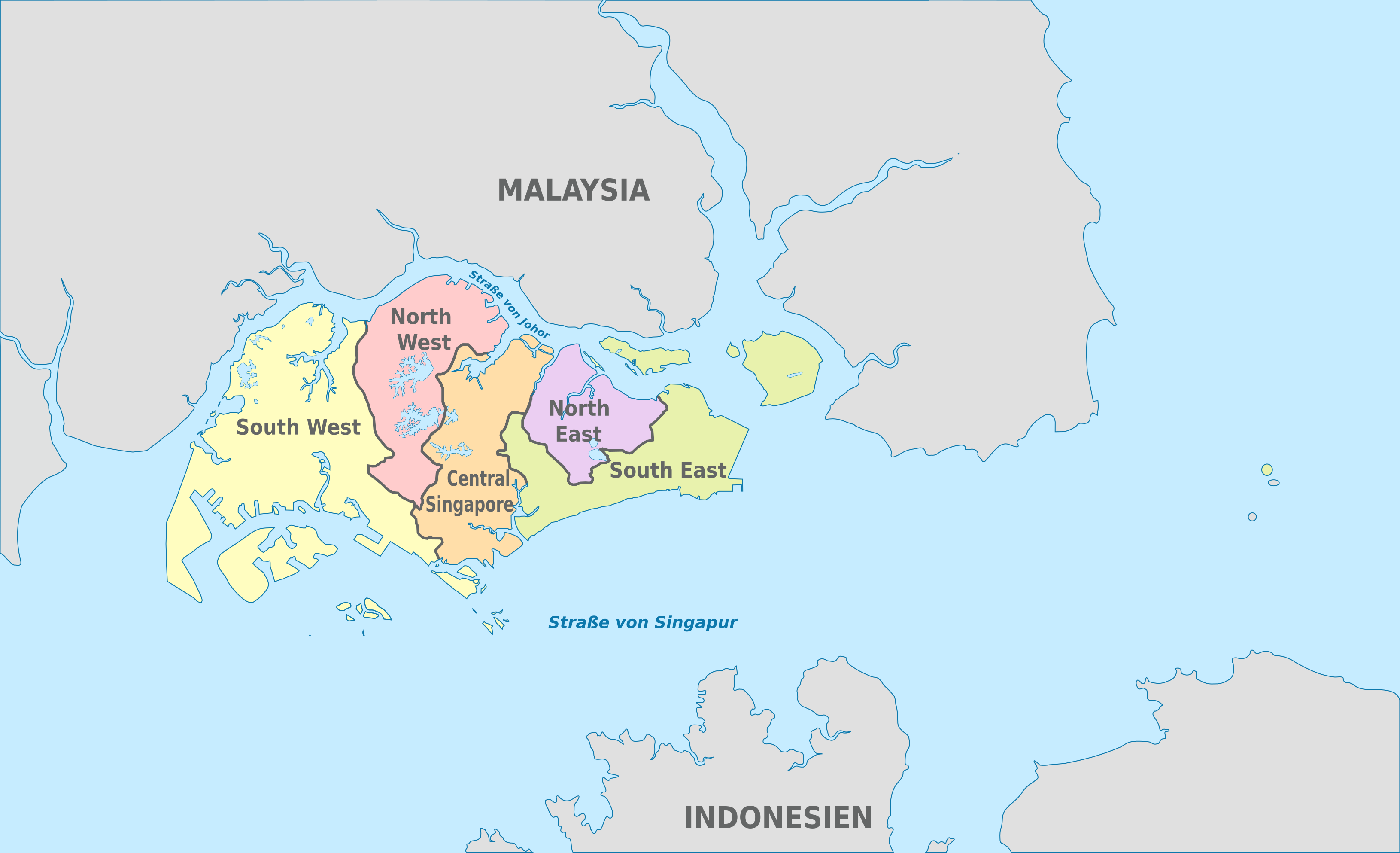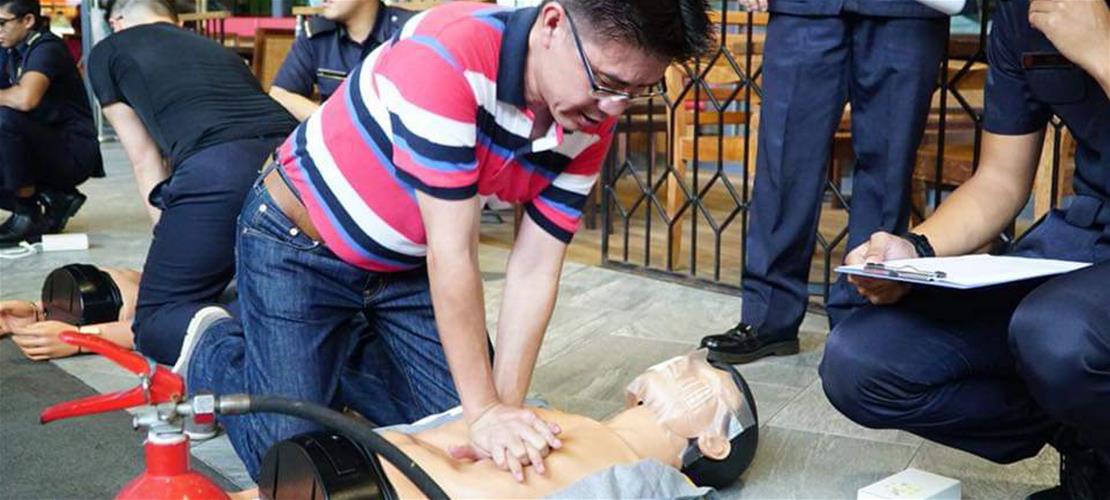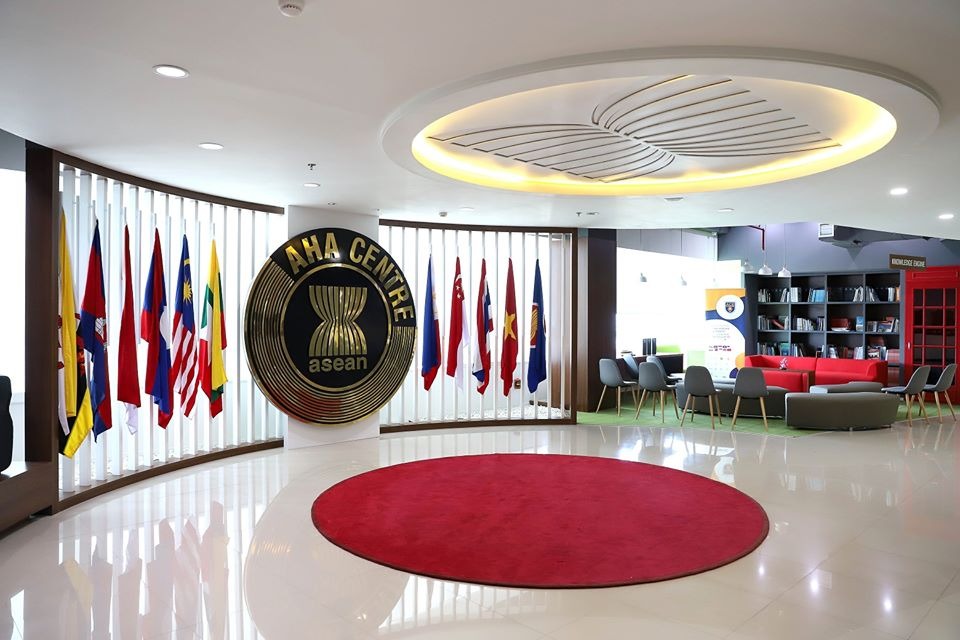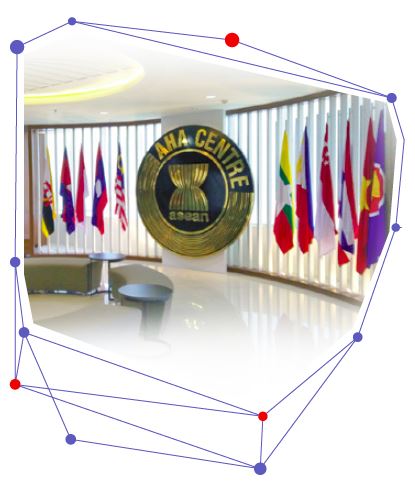
Singapore
National implementation of the ASEAN Agreement on Disaster Management and Emergency Response (AADMER)
Overview of the DRM System
Singapore has a Type C DRM System – A specific law on disasters, focused on emergency preparedness and response to natural hazards, some technological hazards; and may have elements of early warning and recovery. These laws tend to be found in countries (i) with low hazard exposure, or (ii) with higher exposure but effective risk governance through sectoral laws, or (iii) with higher exposure but limited law-making and institutional capacity due to poverty and/or conflict.
- Legal framework
- Key national institutions
- Sub-national structures
- Funding and budget
- Integration of the AADMER and AHA Centre
- Provision on international and regional assistance

Ensuring Civil Defence and Emergency Preparedness
The Singapore Civil Defence (SCDF) provides firefighting, rescue, emergency medical services and hazardous materials mitigation. It also formulates, implements and enforces regulations on fire safety and civil defence shelter matters.
What We Do
The role of the SCDF is to provide:
- Emergency Response –24-hour firefighting, rescue, mitigation of hazardous incidents and emergency medical services
- Fire Safety and Public Protection – formulating and enforcing regulations on fire safety and civil defence shelter matters
- Community Engagement – enhancing the resilience and emergency preparedness of the civil population, and promoting community first response

Legislation
Our laws on fire safety, civil defence and emergency preparedness include the following:
- The Civil Defence Act provides for the raising, maintenance and discipline of a civil defence force and for the exercise of the functions and powers of the Force during national emergencies and day-to-day operations
- The Fire Safety Act makes provisions for the fire safety of buildings and to give SCDF the necessary legislative levers to maintain regulatory oversight over relevant stakeholders and take enforcement action against infringements
- The Civil Defence Shelter Act relates to the provision of civil defence shelters for use during a state of emergency and for matters connected to it

Initiatives
Civil Defence Shelter Programme
Building up our nation’s civil defence preparedness, the programme protects the civilian population from weapon effects during a war emergency and is under the SCDF’s umbrella of Total Defence.
MyResponder
The community plays a key role in SCDF’s Tiered Emergency Response Framework as our partner in delivering life-saving interventions to casualties. The MyResponder mobile app crowdsources lifesaving by alerting members of the public to nearby medical cases. These alerts will be further expanded to include fire cases.
Save-A-Life (SAL)
Launched in collaboration with the Ministry of Health, People’s Association and Singapore Heart Foundation, the SAL initiative builds a network of community first responders who are trained in performing CPF and operating AEDs to respond to cardiac arrests in their immediate vicinity.
Our Vision
A Trusted Home Team, A Safe and Secure Singapore.
Our Mission
We work together as one Home Team, and in partnership with the community, to keep Singapore safe and secure.
Core Values
In pursuing this mission, we will always remain true to our core values of Honour and Unity.
Honour
We will always carry out our mission and serve our country and our people with honour, guided by the values of bravery, impartiality, integrity and moral courage to do the right thing even in the face of personal danger and adversity. These are necessary for us to command the trust, confidence and respect of our community whom we are sworn to protect.
Unity
While individually our Departments are strong, collectively and when united as One Home Team, we are stronger. Our diversity becomes a source of strength. We work in harmony with our Home Team colleagues and fulfill our duties as a team. We put the collective mission ahead of individual interests. We draw on each other’s resources, knowledge and capabilities to keep Singapore safe and secure.
Singapore is located in the latitude 1.17 degrees and the longitude 103.51 degrees. It borders Malaysia at the Johore Straits. Singapore consists of the Singapore Island and the surrounding small islands. Plain spreads in the Singapore Island. Land area is 699 square kilometers. Located on the equator, the weather is hot and humid throughout the year. Unclear distinction between dry and rainy season. It is affected by the northeast monsoon (December to early March) the southwest monsoon (June to September). In December and April, it has high precipitation. 75 percent of the 4.59 million population is Chinese, 14 percent Malay, 9 percent Indians.
Overview of Disasters
Though Singapore is spared from natural disasters such as earthquakes, typhoons and volcanic eruptions, the challenges for the emergency services are in preventing and mitigating man-made disasters in a highly urbanised environment with many high-rise buildings and Hazardous Material (HazMat) industries.
Recent Major Disasters
Haze (June 2013-)
Singapore has been affected by severe smoke haze due to open buring and forest fires having been taken place in Sumatra Island of Indonesia periodically. It can be made worse by dry seasons.
Disaster Management System
Legal System
The Civil Defence Act (1986) provides the legal framework for, amongst other things, the declaration of a state of emergency and the mobilisation and deployment of operationally ready national service rescuers. The Fire Safety Act, and the Civil Defence Shelter Act are among the relevant acts on emergency management.
Organization
The Ministry of Home Affairs (MHA) is the principal policy-making government body for safety and security in Singapore. In the event of a national disaster, MHA leads at the strategic level of incident management. At the tactical level, Singapore Civil Defence Force (SCDF) will coordinate the planning and execution of the multi agency response to mitigate the impact of the disaster. SCDF provides effective 24-hour fire fighting, rescue and emergency ambulance services. Other functions include educating the community as well as mobilizing the community to be more involved in safety and security. SCDF also enforces fire safety requirements and oversees the civil defence shelter construction programme and the public warning system.
Plan
SCDF has developed the Operations Civil Emergency (Ops CE) Plan, a national response plan for civil emergencies which outlines the work of SCDF and all the Related Agencies (RAs)4 in the management of a major disaster. Under this plan, SCDF is overall-in-charge of the multi-agency response.
ADRC Counterpart
Singapore Civil Defence Force (SCDF)
Country Report
Country Report 2006 (Japanese Version, PDF file)
Country Report 2006 (English Version, PDF file)
Country Report 2003 (English Version, PDF file)
Country Report 2002 (English Version, PDF file)
Country Report 2001 (English Version, PDF file)
Country Report 1999 (English Version, PDF file)
Country Report 1999 (Japanese Version, PDF file)
Country Report 1998 (English Version, PDF file)
The Singapore Civil Defence Force (SCDF) is a uniformed organisation under the purview of the Ministry of Home Affairs. The main role of SCDF is to provide fire-fighting, rescue and emergency medical services; mitigating hazardous materials incidents, as well as formulate, implement and enforce regulations on fire safety and civil defence shelter matters.
In 1982, the National Civil Defence Plan was launched which spearheaded the emergency preparedness for the nation. With the enactment of the Civil Defence Act in 1986, SCDF was established as an independent organisation under the Ministry of Home Affairs (MHA). In the same year, the Hotel New World collapse paved the way for joint operations between SCDF and Singapore Fire Service (SFS). Due to the similarity in roles and functions, SCDF and SFS were formally integrated on 15 April 1989.
Over the years, SCDF has improved its life saving operations through innovations and programmes to enhance its fire-fighting, rescue capabilities and public education plans. The Light Fire Attack Vehicle (The Red Rhino) and Unmanned Fire Fighting Machine (UFM) are some of the customised solutions which SCDF has developed to increase its operational capabilities. SCDF also actively engages the local community through its wide-ranging public educational programmes and community-based activities to enhance the resilience and emergency preparedness of the civilian population.
Today, SCDF is recognised by the population as a professional body of well-trained officers and men geared to respond to all types of life-threatening emergencies round-the-clock. An operationally ready SCDF, working hand-in-hand with a prepared and resilient population, helps to ensure that the nation is capable of handling any untoward eventualities.
The AHA Centre is an intergovernmental organisation, established by the ten ASEAN Member States with the aim to facilitate cooperation and coordination of disaster management amongst ASEAN Member States. The Agreement on the Establishment of the ASEAN Coordinating Centre for Humanitarian Assistance on disaster management was signed by ASEAN Foreign Ministers on 17 November 2011, and witnessed by the Heads of State / Government of all ten ASEAN countries. In operationalising its mandate, the AHA Centre primarily works with the National Disaster Management Organisations (NDMOs) of the ASEAN Member States. Furthermore, the AHA Centre also partners with international organisations, private sector, and civil society organisations, such as the Red Cross and Red Crescent Movement, the United Nations, and AADMER Partnership Group.

Multilateral cooperation has been also established with ASEAN Dialogue/ Development/ Sectoral Partners, including Australia, China, European Union, Germany, Japan, New Zealand, Switzerland, and the United States of America. In the event of large-scale disasters, such as 2013 Typhoon Haiyan in the Philippines, the AHA Centre works closely with the Secretary – General of ASEAN who will perform the role as the ASEAN Humanitarian Assistance Coordinator to mobilise more resources and coordinate with ASEAN Leaders and partners world wide.
Furthermore, the AHA Centre reports its progress and activities to the ASEAN Committee on Disaster Management (ACDM) on a regular basis. The ACDM members consist of heads of NDMOs of the ten ASEAN Member States who serve as the Governing Board of the AHA Centre. Additionally, there are two high-level commitments that re-affirm the role of the AHA Centre as the primary ASEAN regional coordinating agency on disaster management and emergency response, which are: 1) The ASEAN Declaration on One ASEAN One Response: Responding to Disasters as One in the Region and Outside the Region and 2) ASEAN Vision 2025 on Disaster Management.
VISION
ASEAN responding as ONE to support disaster-affected communities and becoming a global leader in disaster management.
MISSION
To facilitate and coordinate ASEAN’s efforts in reducing disaster losses and responding to disaster emergencies as ONE, as a centre for information, learning and excellence.

Values
- Always maintain trust and confidence of the ASEAN Member States
- Open working environment where everyone is part of a first class professional team that is stronger together and helping one other
- An efficient and non-bureaucratic organisation that constantly delivers results and gets things done
- Zero tolerance towards corruption with high accountability and financial integrity
- Passion for excellence in everything we do through continuous improvement and innovation to make ASEAN great in disaster management
Effective Disaster Response and Recovery in Singapore
- in disaster recovery
- by ReadySpace Singapore
- March 17, 2025
- Comments Off
- Tags: Crisis response strategies, Emergency preparedness in Singapore, Natural disaster recovery, Singapore disaster management, Urban resilience initiatives
Did you know Singapore is one of the most crowded places in the world? With about 5.2 million people living together, it’s a big challenge. But it’s also a chance to work together to handle disasters well.
Singapore is learning how to manage emergencies better. It’s all about teamwork to lessen the damage from disasters. This article will show you how Singapore prepares for and responds to disasters.
Key Takeaways
- Singapore’s density poses unique challenges for disaster management and response.
- Community resilience is vital in navigating disaster preparedness effectively.
- Emergency management strategies integrate government and citizen cooperation.
- Proactive measures are designed to mitigate impacts and streamline recovery efforts.
- Comprehensive frameworks support the safety and readiness of the population.
Understanding Disaster Response and Recovery Framework
Disaster response and recovery are key parts of emergency management. They aim to reduce harm to people and property during and after emergencies. It’s important to understand all phases of disaster management for effective disaster response and recovery.
Definition and Importance
Disaster response quickly addresses threats to life and property after an event. It involves sending help, giving medical care, and fixing essential services. At the same time, recovery starts right away, focusing on rebuilding and supporting affected people.
Phases of Disaster Management
Knowing the phases of disaster management is essential. These phases are:
- Preparedness: Planning for disasters through training and resource allocation.
- Response: Immediate actions to protect life and property.
- Recovery: Efforts to restore the community after an event.
- Mitigation: Long-term strategies to lessen future risks and impacts.
Local vs. Global Perspectives
In Singapore, disaster management combines local and global standards. The Hyogo Framework of Action aims for big reductions in disaster losses. Effective recovery needs teamwork among different levels of government and agencies.
Local efforts make sure plans fit the community, while global sharing brings new ideas. For more on planning, check out our guide on effective planning for smoother transitions.
Singapore’s Unique Disaster Vulnerabilities
It’s important to know about Singapore’s disaster risks to improve disaster plans. This small island faces challenges from nature and technology. We look into these risks to understand disaster management in Singapore better.
Natural Hazards
Flooding is a big worry in Singapore, mainly during the monsoon. From 1950 to 2020, many floods happened, with a big one in December 1954. It affected 25 km² and killed five people.
Today, the flood-prone area is much smaller, down from 32 km² in the 1970s to 0.29 km² in 2018. This shows efforts to reduce flooding. Singapore gets about 2400 mm of rain each year, making floods more likely.
Technological Risks
Technological risks, like industrial accidents, are growing threats in Singapore. These could lead to water or air pollution, or even big fires. As businesses grow, it’s key to be ready for these risks.
Understanding these dangers shows we need to keep improving safety plans. This is important for disaster preparedness.
Societal Challenges
Singapore’s crowded population makes disaster response harder. With over five million people in a small area, managing resources is key. Civil emergencies, a big part of past disasters, need teams to respond.
Looking at these challenges, we see the value of working together. Strong community support and good planning are essential to overcome these issues.
Government Agencies Involved in Disaster Management
Disaster management in Singapore works well because of teamwork among government agencies. Each group is key to getting ready, acting fast, and recovering well when disaster strikes. Knowing what each does helps us see how Singapore tackles emergencies together.
National Environment Agency
The National Environment Agency (NEA) tackles climate-related dangers in Singapore. It checks risks and works to lessen environmental harm during disasters. The NEA uses maps and risk studies to guide big decisions and plans.
It works with other agencies to make communities stronger against environmental threats.
Ministry of Home Affairs
The Ministry of Home Affairs is key in handling crises and making policies. It brings together different agencies to manage disasters. It runs centers like the National Emergency Operations Centre for big incidents.
The Ministry’s system helps everyone talk clearly and quickly. This makes sure resources are used well.
Civil Defence Force
The Singapore Civil Defence Force (SCDF) is the first to act in emergencies. It does search and rescue, medical help, and fights fires. The SCDF trains volunteers and the public to be ready for crises.
Working with other agencies, the Civil Defence Force makes Singapore’s emergency plan stronger.
Community Engagement in Disaster Preparedness
The role of citizens in disaster preparedness is huge. Local efforts are key to building strong communities. By joining volunteer programs, people help make their neighborhoods safer. This shows how community involvement boosts personal safety and builds a sense of responsibility for our areas.
Role of Citizens
Citizens are vital in getting ready for emergencies. They bring local knowledge that helps us understand risks better. Through meetings and workshops, they share ideas and work together, creating a united front against disasters.
Volunteer Programs and Initiatives
Volunteer programs are essential for community involvement. Groups like neighborhood watches and disaster response teams meet community needs. They work fast after disasters, helping more than big organizations. Schools, businesses, and faith groups also join in, making these efforts stronger.
Building Resilient Neighborhoods
Creating strong neighborhoods means working together and talking openly. Using social media and local news keeps everyone informed. This helps find and fix gaps in disaster plans. As disasters get more common, community action is key to being ready.
Disaster Response Strategies in Singapore
The success of disaster response in Singapore depends on teamwork, good communication, and smart use of resources. These factors help us understand how Singapore gets ready for emergencies and lessens their effects.
Emergency Services Coordination
The Singapore Civil Defence Force (SCDF) has a 24-hour system for emergencies like fires, rescues, and medical help. The SCDF works under the Civil Defence Act to prepare for big emergencies. Laws like the Fire Safety Act help keep fire safety standards high in buildings.
Public and industrial places must have Emergency Response Plans (ERPs). This ensures a quick response in emergencies.
Communication Systems
Good communication is key in disaster response. The MyResponder app lets people help in medical emergencies by alerting them to nearby needs. It will soon help with fire alerts too, making the community more involved in emergencies.
Training programs like Save-A-Life teach people CPR and how to use AEDs. This makes the community ready for emergencies.
Resource Allocation
Using resources wisely is important to lessen disaster impacts. The SCDF’s Tiered Emergency Response Framework focuses on working with the community. It makes sure big public places have ERPs.
Regular drills and training, like Table-Top Exercises (TTE), help test plans. This ensures everything runs smoothly during real emergencies. By planning well, Singapore improves its disaster response and recovery.
Recovery Planning and Support
After a disaster, we need a strong plan for recovery. This plan helps people and families get back on their feet. It includes support for mental health, financial help, and fixing damaged buildings.
Psychological and Emotional Recovery
Getting over a disaster is hard. People feel stressed, anxious, and traumatized. Counseling and support groups are key to helping them heal.
These programs offer a safe place to talk and get help. They help people deal with their feelings and move forward.
Financial Assistance Programs
Financial help is vital after a disaster. It covers costs like housing, medical care, and more. This aid comes in the form of grants and loans.
It lets people and families start rebuilding their lives. This support is a big step towards recovery.
Infrastructure Rehabilitation
Fixing buildings and systems is essential. It includes repairs to utilities, roads, and hospitals. These efforts make sure services work again and make the community safer.
Keeping infrastructure strong is important. It helps prevent damage from future disasters. Regular checks and updates are needed to keep everyone safe.
| Recovery Element | Description | Importance |
|---|---|---|
| Psychological Support | Services such as counseling and community support groups. | Essential for emotional healing and resilience. |
| Financial Assistance | Grants and loans for rebuilding lives. | Alleviates financial burdens after disasters. |
| Infrastructure Rehabilitation | Restoration of essential services and systems. | Ensures community functionality and future resilience. |
In Singapore, we see the need for strong recovery plans. Recent cyberattacks on healthcare services show our weaknesses. To learn more, check this key resource.
Technology’s Role in Disaster Management
Today, technology has changed how we deal with emergencies. It helps us assess risks better, improves search and rescue, and spreads information fast. Let’s look at how GIS, drones, and social media are making a difference.
Use of GIS and Data Analytics
Geographic Information Systems (GIS) help us see and understand disaster impacts. They show us where dangers are and where floods might happen. This lets agencies make smart choices with up-to-date data, making disaster responses better.
Drones in Search and Rescue
Drones are key in disaster work, like finding people and checking damage. They fly over areas, giving us pictures and data right away. This helps find survivors fast and assess damage, saving lives.
Social Media for Information Dissemination
Social media is vital for sharing news during disasters. It lets officials reach many people quickly. Sites like Facebook help share updates and resources, building a community response.
We must keep finding new tech, like AI, to get better at predicting disasters. The tech world keeps moving, so we need to keep learning and using new tools. For more on using tech to talk to customers, see this guide on chatbot conversation design.
Training and Capacity Building
Effective training is key for first responders. It helps them get ready for disasters. We use simulation exercises and drills to teach them practical skills.
These efforts build confidence and readiness. They are vital during emergencies.
Simulation Exercises and Drills
Simulation exercises and drills are essential for disaster preparedness. They help first responders practice their responses. This prepares them for real emergencies.
Educational Programs for First Responders
Specialized training programs improve first responders’ skills. They learn about disaster management and emergency services. The training is tailored to meet the needs of different responders.
This focus on team dynamics is key. It helps responders work better together during crises. Investing in these programs makes disaster management more effective.
Partnerships with NGOs
Working with NGOs boosts training efforts. NGOs bring expertise and resources to the table. This collaboration improves response capabilities.
It also leads to better training outcomes. This is seen in successful models around the world.
We keep improving our training programs. We make sure they meet the changing needs of disaster response. Regular evaluations help us make these programs more effective.
For organizations looking to improve their training and data management, cloud solutions can help. Cloud server options offer the support needed without the hassle of server management.
Public Awareness Campaigns
Public awareness is key to making communities stronger against disasters. When people know what to do, they can help protect themselves and others. This knowledge helps everyone play their part in disaster times.
Working with the private sector can make these efforts even stronger. This way, we can reach more people and make a bigger difference.
Importance of Education
Learning is at the heart of getting ready for disasters. Many people don’t feel prepared, showing we need to teach more. Knowing what to do can make a big difference.
Only a few people have emergency bags ready. But most people see the need to recover after disasters. Teaching the public helps them join in reducing disaster risks.
Key Campaigns and Initiatives
Many efforts highlight the need for public awareness in disaster management. The United Nations has set a day to focus on disaster risk reduction. This shows the world’s dedication to spreading the word.
World Tsunami Awareness Day also teaches about tsunami risks. Sharing stories of disasters helps people understand the value of talking about them. This way, we can all learn and grow together.
Engaging the Private Sector
Getting businesses involved in disaster education can really help. They bring new resources and ideas to the table. This teamwork leads to better awareness and more ways to share information.
Working with companies helps us tackle the gaps in knowledge. Many people think luck is more important than preparation. But with the right education, we can change that.
International Collaboration and Best Practices
In disaster management, working together across borders is key. Looking at global examples shows us important strategies for better results. Japan is a leader, showing us how to manage disasters well. Singapore also shares knowledge and practices with others, improving its own plans.
Learning from Global Examples
Disasters affect millions worldwide, causing huge economic losses. It’s vital for countries to learn from each other. For example, Himeji City in Japan has set up alert systems in over 70 communities. This shows the value of being ready for disasters.
Joint Training Exercises
Training together is essential for getting better at disaster response. Singapore does this with other countries, improving its skills. The theme of the International Day for Disaster Risk Reduction, #OnlyTogether, highlights the need for working together. This helps both rich and poor countries develop better plans.
Policy Development
Good policies are the foundation for disaster management success. The Sendai Framework stresses the importance of working together, focusing on gender and disability. Despite progress, there’s more work to do. Improving health and disaster management collaboration is key to stronger communities.
| Country | Initiative | Impact |
|---|---|---|
| Japan | Disaster alert systems | Increased community readiness and response efficiency |
| Nigeria | Delegation participation in global discussions | Strengthened international dialogue on disaster response |
| Mozambique | Ten-year Disaster Risk and Vulnerability Reduction Plan | Enhanced preparedness and recovery infrastructure |
Future Directions in Disaster Response and Recovery
The future of disaster response and recovery in Singapore looks bright. New innovations and sustainable practices will shape our efforts. These changes will make emergency management more efficient and build stronger communities.
Technology will play a big role in these advancements. We can expect breakthroughs that improve operations and communication during crises. This will make our disaster management stronger.
Innovations on the Horizon
The field of emergency management is changing fast. Advanced data analytics and artificial intelligence will give us new insights. For example, the Open Data for Resilience Index will help us plan better.
Smart technologies will also be key in keeping our communities safe. They will help us adapt to environmental changes and protect lives and property.
Sustainable Practices
Dealing with climate change and urbanization means we need sustainable practices. Disasters are pushing 26 million people into poverty each year. Singapore must focus on eco-friendly disaster response.
This includes green infrastructure and community awareness programs. These efforts can help reduce the impact of future disasters.
Policy Improvements and Legislation
Creating laws that support disaster response is also important. Policymakers should work together with government, businesses, and communities. This will strengthen our disaster systems and build a culture of preparedness.
We need to keep improving and work together for a safer future. For more information, check out this link.
FAQ
What is the significance of disaster response and recovery in Singapore?
Disaster response and recovery are key to protecting lives and property in natural disasters. Singapore has a strong plan to manage these events. It focuses on being ready, responding quickly, helping with recovery, and preventing disasters.
What phases are involved in disaster management?
Disaster management has four main phases: preparedness, response, recovery, and mitigation. Each phase is important for a complete disaster management plan. It helps make communities more resilient.
What unique vulnerabilities does Singapore face regarding disasters?
Singapore faces risks like floods and heavy monsoons, and also industrial accidents. Its high population density and resource use make disaster planning harder.
Which government agencies are involved in Singapore’s disaster management?
Agencies like the National Environment Agency, Ministry of Home Affairs, and Civil Defence Force are key. They work together to manage emergencies well.
How can citizens participate in disaster preparedness initiatives?
Citizens can help by joining community programs. This builds stronger neighborhoods ready for disasters.
What strategies are employed for effective disaster response in Singapore?
Singapore uses coordinated emergency services and reliable communication. It also allocates resources well to respond to disasters.
What plans are in place for recovery support after a disaster?
Singapore focuses on mental health support and financial aid for recovery. It also works on rebuilding infrastructure to strengthen communities.
How does technology enhance disaster management efforts?
Technology helps with mapping risks, using drones for rescue, and sharing information on social media. It makes disaster management more effective.
What training is provided for first responders in Singapore?
First responders get training through simulations and drills. Educational programs and partnerships with NGOs help improve their skills.
Why is public awareness important in disaster preparedness?
Public awareness informs people about risks and how to respond. It makes communities more prepared. Government and private sector campaigns help educate the public.
How does Singapore collaborate internationally on disaster management?
Singapore learns from global experiences and joins international training. This improves its disaster management and brings in best practices.
What future innovations are anticipated in Singapore’s disaster response and recovery?
Future innovations might include new technologies and sustainable practices. Policy improvements and legislation will also help make communities safer and more resilient.